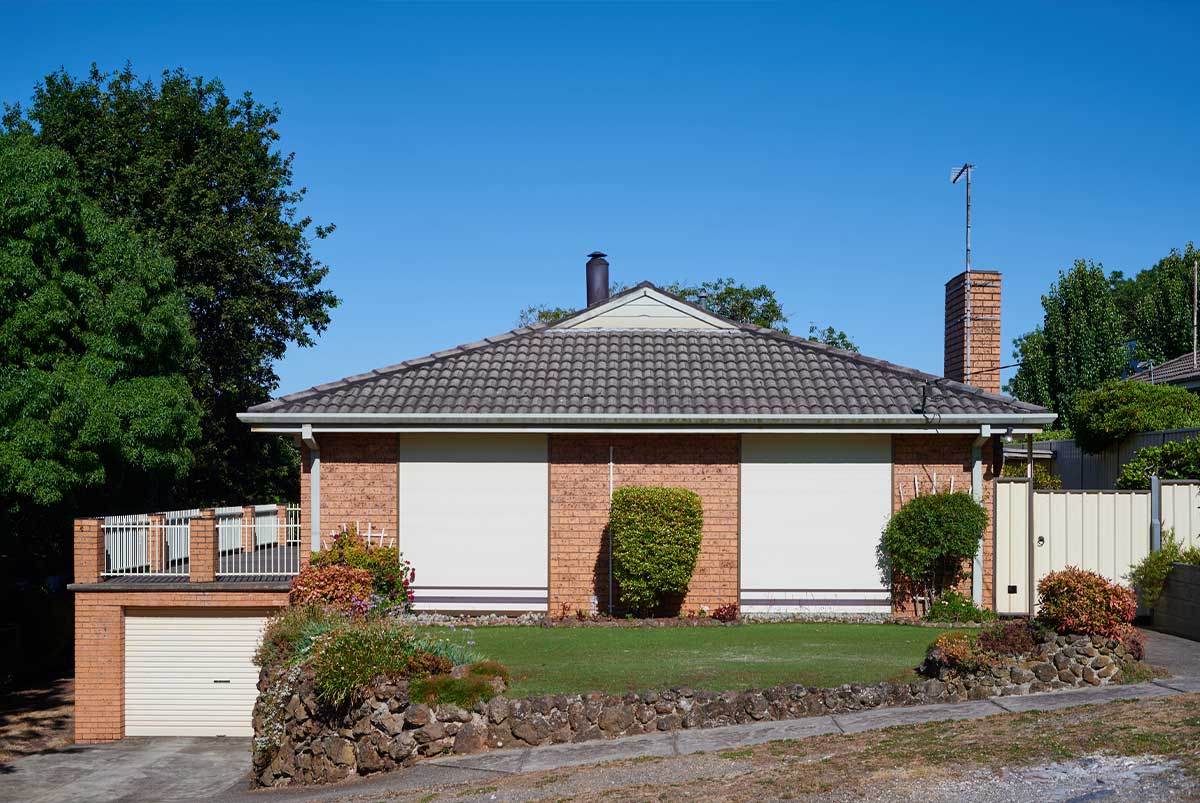Ready To Buy a Home?
Get Approved to Buy a Home
Rocket Mortgage® lets you get to house hunting sooner.
Founded by Congress in 1970, Freddie Mac exists to provide liquidity and stability to the U.S. mortgage market.[1]Their core mission is to ensure a reliable and affordable supply of mortgage funds. In theory, this helps keep interest rates lower and makes mortgages affordable for more Americans.
Designed to help very low- to low-income borrowers become homeowners, the Freddie Mac Home Possible® program is an extension of this mission. We’ll explain everything you need to know about the program, so you can decide if it’s right for you.
What Is Freddie Mac’s Home Possible® Program?
Explore Your Mortgage Options
What are you looking to do?
Freddie Mac was founded to help the general public afford mortgages. Their Home Possible® program is a mortgage designed specifically for low-income borrowers. Home Possible® mortgages are conforming loans. “Conforming” means the loan was underwritten to meet the standards of Freddie Mac and Fannie Mae.
The government also created Fannie Mae to help with mortgage affordability, albeit decades earlier. That’s why Fannie Mae and Freddie Mac are often mentioned together. Despite some key differences, their missions are intertwined.
Fannie Mae even has a similar program for low-income borrowers – the Fannie Mae HomePath® program.
Who Can Qualify for a Home Possible® Loan?
Because the Home Possible® program is designed to help those who otherwise might not be able to afford a home, there are key eligibility requirements.
First, there’s an income limit. You can’t make more than 80% of your area median income (AMI).[2] So if the AMI where you live is $50,000, you’d need to make $40,000 or less. You can use this tool to check income limits near you.
Other eligibility requirements
There are some additional requirements you’ll need to meet to qualify.
- Down payment: You’ll need to put at least 3% down to meet the loan requirements.[2]
- Credit score: The minimum credit score for a 1-unit fixed-rate mortgage is 660. However, borrowers without a credit score may be underwritten if they put 5% down.[3]
- Debt-to-income (DTI) ratio: Your DTI ratio can be as high as 45% for manually underwritten mortgages.[4]
- Property type: The property must be used as a primary residence. Condos and manufactured homes are eligible, provided they meet additional requirements.[3]
- Owning other properties: You can’t own more than two financed residential properties, including the subject property.[3]
Home buyer education course
One unique requirement for the Home Possible® loan is the possibility of homeownership education. If everyone on the loan is a first-time home buyer, at least one person who’ll be living in the home must complete the homeownership education course.[3]
If you’re required to undergo education, courses must meet national standards for homeownership education. They must also be provided by an eligible source, such as a U.S. Department of Housing and Urban Development (HUD)-approved counseling agency, mortgage insurer, Housing Finance Agency (HFA), or Community Development Financial Institution (CDFI).[3]
Should You Consider a Home Possible® Loan?
A Home Possible® mortgage could be your path to owning a home. Here are some pros and cons to consider before deciding if this program is right for you.
PROS of a Home Possible® Mortgage👍
The 3% down payment required for the Home Possible® program is less than the 5% down that’s usually required for a conventional loan.
If you put less than 20% down, you’ll owe private mortgage insurance (PMI). However, once you reach 20% equity in your home, you can ask your lender to cancel PMI.[5]
Other loan options that allow low down payments, like a Federal Housing Administration (FHA) loan, come with a mortgage insurance premium (MIP). This mortgage insurance comes with higher upfront costs and an annual payment that lasts for the life of the loan.
The Home Possible® program offers lenders credit-fee caps and less-than-standard fees.[6] This allows lenders to offer borrowers more competitive rates.
Sweat equity is one unique perk of the Home Possible® program. Basically, it allows borrowers to leverage their construction skills to cover down payment and closing costs without spending cash. Learn more about Home Possible® sweat equity parameters.
CONS of a Home Possible® Mortgage👎
Depending on where you live, you may not be able to qualify for a Home Possible® mortgage because you earn too much.
One of the requirements of a Home Possible® loan is that the home must be used as a primary residence. That means the program isn’t an option if you’re looking for an investment property.
Cash-out refinance isn’t allowed for borrowers who occupy the property. Only rate-and-term refinancing is available. So down the road, you won’t be able to convert your equity on this property into cash.
Home Possible® Loan Next Steps
If you think a Home Possible® loan is right for you, here are the next steps in the process.
- Verify you meet income requirements: If you make too much to qualify for the program, it’s best to save yourself the trouble of looking up lenders. Use the eligibility map to check income limits in your area.
- Find lenders who offer Home Possible® mortgages: Not all lenders offer Home Possible® mortgages. If you’re interested in the program, make sure it’s available through your lender.
- Contact them about applying: Once you’ve found the right lender that offers the program, get in touch. They’ll have a conversation with you to see if you qualify for the program or if there might be an alternative loan available. If you decide to get preapproved, they’ll also let you know which documents you need and how to fill out an application.
Get approved to buy a home.
Rocket Mortgage® lets you get to house hunting sooner.
Alternatives to a Home Possible® Loan
Home Possible® loans can be a great option, but they aren’t the only one available to low-income borrowers. Fannie Mae’s HomeReady® mortgage program was designed for low-income borrowers with good credit.
Alternatively, government-backed loans – like FHA loans – can be great options for those with lower credit. U.S. Department of Veterans Affairs (VA) loans are also good options for those who’ve served in the military. U.S. Department of Agriculture (USDA) loans are another viable option, provided you live in an eligible area.
Home Possible® Loan FAQs
Yes, Home Possible® loans are conventional loans.
No, the program is open to people who are not first-time home buyers.
The minimum credit score for a 1-unit fixed rate mortgage is 660. However, borrowers without a credit score may be underwritten if they put 5% down.[3]
Home Is Possible
Remember, if you want to get a Home Possible® mortgage, you’ll need to meet the income requirements and put at least 3% down. You’ll also have to use the home as a primary residence.
Depending on how much money you make and what you plan to do with the property, other mortgage options may be better suited to your needs.
The Short Version
- Freddie Mac was founded to help the general public afford mortgages. Their Home Possible® program is a mortgage designed specifically for low-income borrowers
- There is an income limit to qualify. You can’t make more than 80% of your area median income (AMI), and you’ll need to put at least 3% down[3]
- If you’re a first-time home buyer, you’ll need to complete a homeownership education course to receive the loan. Education must be provided by an eligible source
Federal Housing Finance Agency. “Fannie Mae and Freddie Mac.” Retrieved February 2023 from https://www.fhfa.gov/about-fannie-mae-freddie-mac
Freddie Mac. “Home Possible® Fact Sheet.” Retrieved February 2023 from https://sf.freddiemac.com/working-with-us/origination-underwriting/mortgage-products/home-possible
Freddie Mac. “Home Possible® Mortgage, All For Home.” Retrieved February 2023 from https://sf.freddiemac.com/content/_assets/resources/pdf/fact-sheet/home_possible_factsheet.pdf
Federal Deposit Insurance Corporation. “Home Possible®.” Retrieved February 2023 from https://www.fdic.gov/resources/bankers/affordable-mortgage-lending-center/guide/part-1-docs/freddie-home-possible.pdf
Federal Reserve. “Homeowners Protection Act.” Retrieved February 2023 from https://www.federalreserve.gov/boarddocs/supmanual/cch/hpa.pdf
Freddie Mac. “Home Possible Flyer.” Retrieved February 2023 from https://sf.freddiemac.com/content/_assets/resources/pdf/fact-sheet/sf-fm-homepossibe-mortgage.pdf




